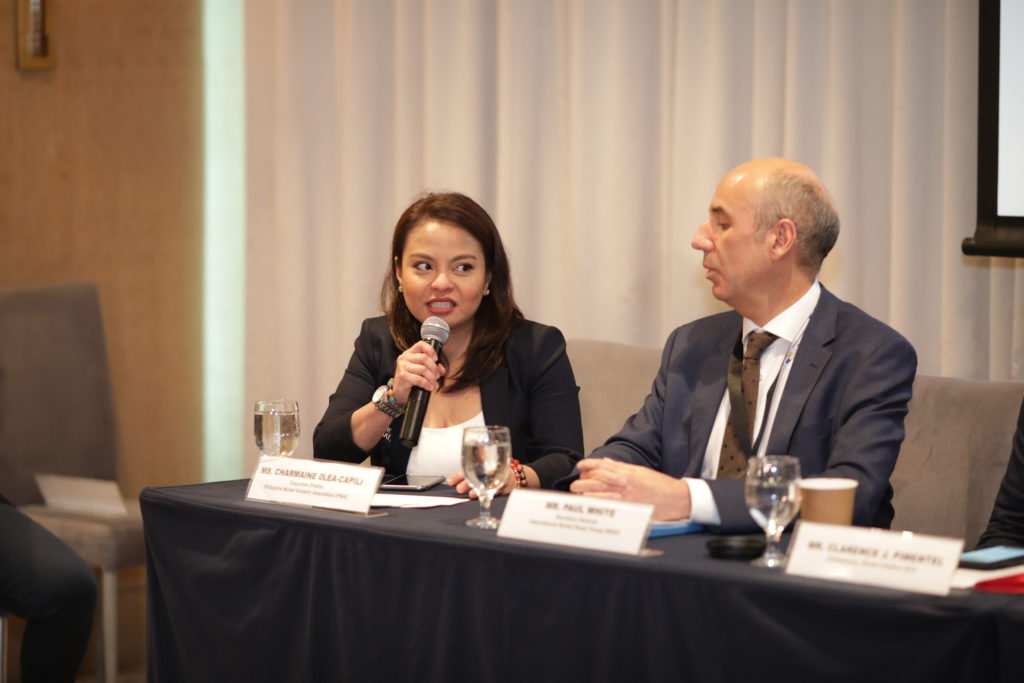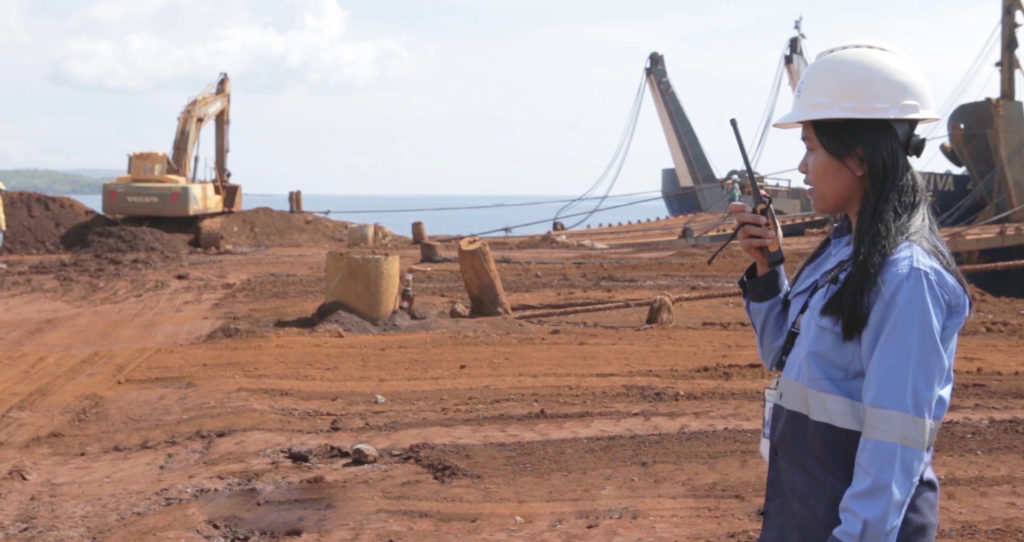DAVAO CITY- The woman at the forefront of the nickel mining industry in the Philippines is a Dabawenya who had 17 years experience in the field of communications and public relations.
“When I joined PNIA in late 2017, I never imagined the impact that a woman-led mining workplace could have,” says Charmaine Olea Capili, Executive Director of the Philippine Nickel Industry Association Inc. or PNIA.
The 40-year old mining executive possesses an impressive track record in public affairs, stakeholder relations, policy advocacy, crisis management, grassroots engagement, development communication and business development.

Her experience is put to good use in a work which entails establishing a singular voice in the country’s nickel industry, the PNIA is composed of the seven largest nickel mining companies in the country.
Born and raised in Davao City, Charmaine who studied grade school to college at the Ateneo de Davao started at the erstwhile Mindanao Economic Development Council (MEDCO), was the former senior public affairs officer of EON The Stakeholder Relations Group, the largest PR agency in the country.
“I have executive oversight of our membership, strategic communications, external stakeholder relations, and public policy efforts,” Charmaine describes her current work at the PNIA.
The country is the second largest nickel producer in the world. According to Mines and Geosciences Bureau (MGB) data, from January to September 2018, the Philippines produced 22.2 Million Dry Metric Tons (DMT), with a total value of US$465 Million.
Based on the figures provided International Nickel Study Group (INSG), the Philippines went from about 1,600 metric tons produced in 2008 to 2,345 metric tons in 2018, with the highest production peak during 2013 at 2,600 metric tons.
The country’s nickel mines are situated in the Caraga Region and the the CARAGA region and MIMAROPA (Mindoro-Marinduque-Romblon-Palawan) region, particularly in the provinces of Surigao del Norte, Surigao del Sur, Agusan del Norte, Palawan, Zambales, Tawi-Tawi, and in Mindoro.
Department of Trade and Industry (DTI) data reveals that mining’s shares to the gross regional domestic product from 2010-2017 averaged 21.8% in MIMAROPA region, and 20.5% in the CARAGA region.
“The multiplier effect and the velocity of money paved the way to change the lives of people in the community,” Charmaine said.
The PNIA recently held the Nickel Initiative (NI) with the aim of strengthening collaboration with stakeholders in crafting a roadmap that will add value to nickel exports and promote sustainable and inclusive economic growth.
“There is so much future in nickel, it is used in over 300, 000 products across various sectors. Nickel is also helping us move forward to the future, for example the transportation sector is shifting from gas-powered vehicles to electric vehicles or e-vehicles. Nickel is a key component to the manufacture of long lasting batteries for e-vehicles,” as she describes the mineral’s unlimited potentials.

Women in Industry
During her recent speech at the Mining Investment Asia held in Singapore, Charmaine touched upon the topic of empowering women in the nickel industry.
Based on a PNIA survey there are about 700 women employed in the offices and mining sites of the seven PNIA member companies.
Data from the same survey reveal that women comprise about 35% of the nickel mining workforce.
“Female executives and managers comprise 5.80% of the total number of employees. Meanwhile, 6.70% are women in operational mining work, meaning, these are the women who function as backhoe operators, mining engineers, geologists, checkers, pollution control, and environmental monitors,” reads part of Charmaine’s speech at the Singapore event.
“My personal journey as a woman in the mining industry has been informed and shaped by the many women whom I have also had the opportunity to work with and to learn from,” she narrates her experience in a work mostly dominated by men.
Charmaine, a single mother who has a 15-year old son, Martine Jose, follows a mantra that one’s thoughts, words and actions towards other people should always be guided by good intentions. A personal philosophy which she applies towards her work and advocacy for women in the nickel mining industry.
In espousing an industry that is for inclusive development, empowering women and giving women agency to take control of their own lives is of utmost importance,” Charmaine said.
She says it’s a good thing that more women are in supervisory, managerial and executive leadership positions –whom other women can look up to as role models, and which can hopefully ease their entry into the industry.
The Department of Environmental and Natural Resources Mines and Geosciences Bureau (DENR-MGB), the mining industry regulator has a Gender and Development (GAD) Program which advocates equality for all women employed in the mining sector.

This provides for an elimination of discrimination in employment, parity of pay, and closing the gap in terms of available opportunities for advancement and training.
The Magna Carta for Women also specifies the protection of women who belong to the marginalized sector, those who are disadvantaged and have little to no access to necessities.
This is why according to Charmaine the PNIA member mining companies implemented various livelihood and assistance programs for the women in our host communities.
“These women – our employees, community residents, and indigenous women alike – are living proof that women can and do thrive in the mining industry. Aside from their roles as wives, mothers, and daughters, the women in our mine sites are involved in activities of the area as employees, as providers of goods and services, and as small entrepreneurs. These women dispel the popular notion that mining is a masculine endeavor,” read part of Charmaine’s speech.
“Only when I saw the inner workings of our member-companies, the women in our offices and mine sites did I truly appreciate what it means to be a woman in a traditionally male-dominated industry,” Charmaine recalls her beginnings and the triumph of her advocacy. (PIA/RG Alama)
